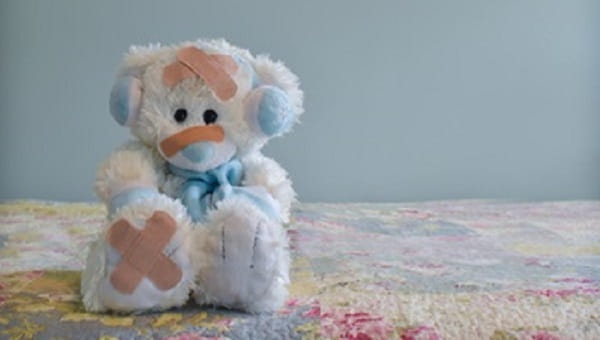No parent wants to think about their child getting hurt, at any age, but bumps and bruises may happen from time to time. Aside knowing how to get their child the right medical treatment, one of the most important items a parent can have is a first aid kit. Leave one in the car, one in the house and make sure to restock the kit frequently. Whether you buy a packaged kit or put together your own, there are a few basic items you need to have—and a few basic techniques you need to know.
Baby First Aid Kit
Here are some tips on what items you’ll need in your first aid kit:
- Thermometer
- Infant medications, like gas drops, antihistamine, pain relievers
- Allergy cream, calamine lotion and/or hydrocortisone cream
- Electrolyte drinks, like Pedialyte
- Cold pack
- Adhesive bandages
- Bulb syringe
- Tweezers
- Petroleum jelly
- Antibacterial pain-relieving spray (“boo-boo spray”)
- Fingernail clippers
- Diaper rash cream
First Aid Tips
- Insect stings and bites: Remove the stinger (if present) with tweezers and use a cold pack to reduce pain and swelling. Apply calamine lotion or hydrocortisone cream. If your baby has an allergy, give antihistamines and head to the emergency room.
- Random hives: Sometimes we don’t know what causes an allergic reaction. If hives are the only symptom, you can give an antihistamine.
- Diaper rash: Apply petroleum jelly or a zinc oxide cream.
- Eye injury: If there’s no obvious damage, flush the eye with saline solution or water.
- Scrapes and scratches: Wash with soap and water if possible, then apply boo-boo spray and a bandage, if needed. Make sure baby’s nails are trimmed short to prevent accidental scratching.
- Bleeding cuts: Wash with soap and water and apply direct pressure for 15 minutes. Cover with an adhesive bandage if bleeding stops.
- Fever: Check temperature to confirm. Call your pediatrician for additional instructions. Remove clothing and place the baby in a room temperature bath for 15-20 minutes to bring down a high fever.
- Minor burns: Place under cool running water for 10 minutes.
Seek Immediate Medical Attention
- Baby may have swallowed something poisonous or dangerous
- A bump on the head leading to vomiting or loss of consciousness
- Breathing difficulty, or blue/gray lips or skin
- Choking or object lodged in mouth or throat
- Burns beyond just reddened skin
- Cuts or wounds that seem large or deep, especially on the head, chest or tummy, or that don’t stop bleeding after several minutes of direct pressure
- Seizures or other events when baby just isn’t “acting right”
- Allergic reaction beyond simple hives, which could include swelling of the face, tongue or lips, coughing and difficulty breathing
- Eye injury that doesn’t improve after flushing with saline solution or water




